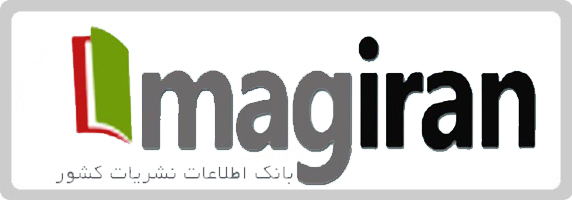Comparison of executive functions of children with autism spectrum disorders with normal children in Tabriz city
Keywords:
executive functions, autism spectrum disorders, normal childrenAbstract
The purpose of this study was to compare executive functions of all the children with autism spectrum disorders of Tabriz city with normal children. The methodology was causal-comparative. The statistical population included all the children with autism spectrum disorders of Tabriz city with normal children among them 35 people were selected for each group. The instrument of data collection was executive functions questionnaire. Data was analyzed through MANOVA method using SPSS software. The results showed there is significant difference among eightfold components of executive functions between autism spectrum disorders children and normal children, such that the rate of eightfold components of executive functions in autism spectrum disorders children are significantly less than the ones in normal children.
Downloads
References
Alsaedi, R. H., Carrington, S., & Watters, J. J. (2020). Behavioral and neuropsychological evaluation of executive functions in children with autism spectrum disorder in the gulf region. Brain Sciences, 10(2), 120. https://doi.org/10.3390/brainsci10020120
Amani, A., Mazaheri, M., Nejati, V., & Shamsian, B. S. (2017). The effect of cognitive rehabilitation of executive functions on increasing the level of hope of adolescents rescued from leukemia: a randomized clinical trial. Journal of Rehabilitation, 8(1), 73-82. https://doi.org/10.21859/jrehab-180173
Amani, M., Yaghoubi, M., Shabani, M., Kashfi, M., Sepehri, P., & Pourmohammad Ghouchani, K. (2024). Comparing the Effectiveness of Cognitive-Behavioral Therapy and Parent-Child Relationship Therapy on Social Skills and Emotion Regulation in Mothers of Children with Autism. Journal of Cognition, Behavior, and Learning, 1(3), 225-237. https://doi.org/10.61838/jcbl.1.3.16
American Psychiatric, A. (2013). Diagnostic and statistical manual of mental disorders. Text revision. 5th ed. Washington D.C: American Psychiatric Association Press. https://doi.org/10.1176/appi.books.9780890425596
Asadi Gandomani, R., Kazemi, F., Pishyareh, E., Hashemi Azar, J., & Nasaeian, A. (2016). The Relationship Between Sensory Processing Patterns and Executive Functions in Students with Autism Spectrum Disorder. Journal of Exceptional Individuals, 6(23), 27-48. https://jpe.atu.ac.ir/article_7366.html?lang=en
Azka, F., & Hendrawan, D. (2023). Intelligence Profile and Executive Function Between Children with Typical Development and Children with High-Functioning Autism Spectrum Disorder. Jurnal Psikologi, 50(1). https://journal.ugm.ac.id/jpsi/article/view/73068
Chen, G., Zhu, Z., He, Q., & Fang, F. (2021). Offline transcranial direct current stimulation improves the ability to perceive crowded targets. Journal of Vision, 21(2), 1-1. https://doi.org/10.1167/jov.21.2.1
Gentil-Gutiérrez, A., Santamaría-Peláez, M., Mínguez-Mínguez, L. A., González-Santos, J., Fernández-Solana, J., & González-Bernal, J. J. (2022). Executive functions in children and adolescents with Autism Spectrum Disorder, Grade 1 and 2, vs. neurotypical development: A school view. International journal of environmental research and public health, 19(13), 7987. https://doi.org/10.3390/ijerph19137987
Geurts, H. M., de Vries, M., & van den Bergh, S. F. W. M. (2013). Executive Functioning Theory and Autism, Handbook of Executive Functioning. Springer Publication. https://doi.org/10.1007/978-1-4614-8106-5_8
Just, M. A., Cherkassky, V. L., Keller, T. A., Kana, R. K., & Minshew, N. J. (2007). Functional and anatomical cortical under connectivity in autism: evidence from an fMRI study of an executive function task and corpus callosum morphometry. Cereb Cortex, 17(2), 951-961. https://doi.org/10.1093/cercor/bhl006
Lai, M. C., Lombardo, M. V., Auyeung, B., Chakrabarti, B., & Baron-Cohen, S. (2015). Sex/gender differences and autism: setting the scene for future research. Journal of the American Academy of Child & Adolescent Psychiatry, 54(1), 11-24. https://doi.org/10.1016/j.jaac.2014.10.003
Lowe, C. J., Cho, I., Goldsmith, S. F., & Morton, J. B. (2021). The bilingual advantage in children's executive functioning is not related to language status: A meta-analytic review. Psychological Science, 32(7), 1115-1146. https://doi.org/10.1177/0956797621993108
Mashhadi, A., Hassani, J., & Timouri, S. (2017). Validity and Reliability of the Persian Version of the Behavior Rating Inventory of Executive Function-Preschool Version (Parent Form). Journal of Clinical Psychology, 9(1), 75-84. https://jcp.semnan.ac.ir/article_2520_c0464c48280d64b32c09b4d5e3ebfde0.pdf
Merchán-Naranjo, J., Boada, L., del Rey-Mejías, Á., Mayoral, M., Llorente, C., Arango, C., & Parellada, M. (2016). Executive function is affected in autism spectrum disorder, but does not correlate with intelligence. Revista de Psiquiatría y Salud Mental, 9(1), 39-50. https://doi.org/10.1016/j.rpsm.2015.10.005
Mikaeli, N., Argha, N., & Basharpoor, S. (2019). Comparison of Executive Functions and Cognitive Flexibility in Children with Autism and ADHD University of Mohaghegh Ardabili]. http://repository.uma.ac.ir/id/eprint/10528
Pourmohammad Ghouchani, K., Ghadampour, E., Yousefvand, M., Padvand, P., & Aj, A. (2019). The Effectiveness of Cognitive-Metacognitive Strategy Training on Problem-Solving Styles and Referential Thinking in Female Students. Modern Educational Thoughts, 15(2), 203-216. https://www.sid.ir/paper/86819/en
Razavi, F., Pourmohamadreza-Tajrishi, M., Haghgoo, H., Bakhshi, E., Tavakoli, S., & Miri, S. M. A. (2019). Relationship between executive functions and pragmatic language in children with autism spectrum disorders. Iranian Rehabilitation Journal, 17(3), 225-234. https://doi.org/10.32598/irj.17.3.225
Roufian, N., Malekzadeh, D., Dehvari Mohammadi, S., Lashkarizadeh, A., & Dehvari Mohammadi, A. (2021). Executive Function in Students with Autism Spectrum Disorder. 9th National Conference on Psychology and Educational Sciences, https://en.civilica.com/doc/1509295/
Shamsi Halasu, M., Tabatabaei, S. M., & Azmodeh, M. (2023). Comparing the Effectiveness of Transcranial Direct Current Stimulation (tDCS) and Cognitive Rehabilitation on Executive Functions in Children with Autism Spectrum Disorders. Scientific Journal of Pajouhan, 21(2), 113-121. https://doi.org/10.61186/psj.21.2.113
Wallace, G. L., Kenworthy, L., Pugliese, C. E., Popal, H. S., White, E. I., Brodsky, E., & Martin, A. (2016). Real-World Executive Functions in Adults with Autism Spectrum Disorder: Profiles of Impairment and Associations with Adaptive Functioning and Co-morbid Anxiety and Depression. Journal of Autism and Developmental Disorders, 46(3), 1071-1083. https://doi.org/10.1007/s10803-015-2655-7
Zeidan, J., Fombonne, E., Scorah, J., Ibrahim, A., Durkin, M. S., Saxena, S., & Elsabbagh, M. (2022). Global prevalence of autism: A systematic review update. Autism Research, 15(5), 778-790. https://doi.org/10.1002/aur.2696
Downloads
Published
Submitted
Revised
Accepted
Issue
Section
License
Copyright (c) 2025 زهرا مجیدپور (نویسنده); منصور بیرامی (نویسنده مسئول); فاطمه اسدی , مریم نصیری, کامران پورمحمدقوچانی (نویسنده)

This work is licensed under a Creative Commons Attribution-NonCommercial 4.0 International License.





